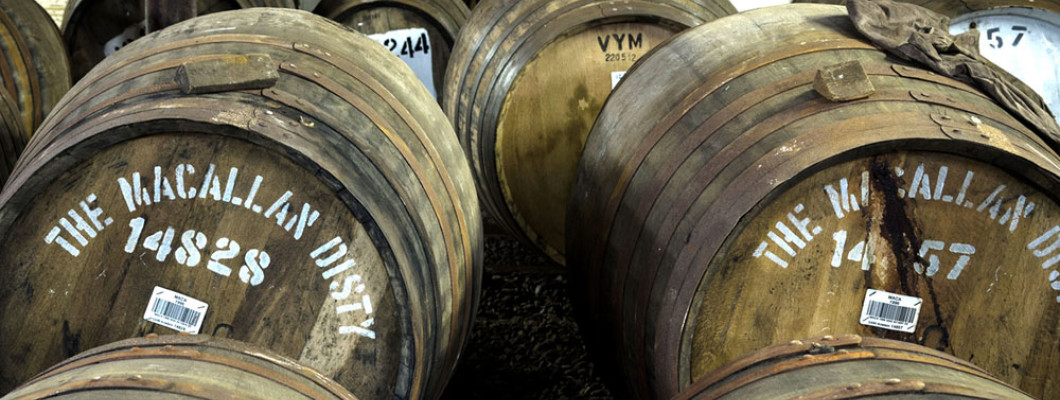
Did you know that Scotch whisky is a uniquely Scottish spirit? What this means is that scotch is to be made in Scotland using three natural and raw ingredients: malted barley, clean water, and yeast. However, simplicity belies depth. Scotch must be aged for at least three years in oak casks to earn its name.
Now arises the obvious question: What are the different types of Scotch? What do they have in common? Surprisingly enough, until 1831, there was only one kind, whereas now the world is filled with different types of Scotch. Each category of scotch possesses its own unique features, though what they have in common is the lowest content of alcohol, which is 40% ABV.
Let's go into detail about this fascinating process and learn how to make scotch, which is a true challenge of tradition and meticulous attention to detail.
Unveiling the Secrets Behind the Steps in Making Scotch
Malting
This is where scotch production begins with malting. Now you will wonder, 'What is malting?' It is the process of germinating grains, specifically barley, in the case of scotch, to unlock the enzymes present within that convert starches into sugars.
Malting the barley involves steeping it in water and allowing it to germinate. Barley is a seed, after all. This starts the process of activating enzymes, which would later help convert starch within the barley into sugars, which, when mixed with yeast, will create alcohol. After a day, the wet grains are spread out on the floor of a large room to keep growing and eventually dry out. The grains are raked every 8 hours to keep them from getting tangled and to help them dry evenly. Even after a couple days, the grain is still damp, but the sprouting process has slowed down, so to stop the germination process completely, transfer the sprouted barley, otherwise known as green malt, to a kiln for drying.
This step of the process influences the final flavor because it occasionally dries barley over readily available peat, which burns with a dark, pungent smoke, imparting a smokey flavor.
1. Mashing
Before mashing, the grain must be completely dry, and after drying, the grains are ground into a coarse flour known as grist. This grist is then ready for the next stage of mashing. Who knew a simple soak could unlock such complex flavors within a humble grain?
The water plays a crucial role in mashing. The mineral composition, along with the precise temperature of water, allows the active enzymes a product of malting, to work their magic. By adding hot spring water in stages, the temperature within the mash tun gradually increases, reaching a peak at 68 °C, where enzyme activity is optimal. This transforms the starchy grist into a sweet liquid known as 'wort,' setting a foundation for the future Scotch. The spent grain, which is left over from this process, is dried and sent to cattle farmers, so nothing is wasted.
Fun fact: Apparently, cows love the spent grains, but there's a humorous story behind it. Once, folks tried to feed the cows the spent grain from making highly peated whisky, but they took one sniff and walked away.
2. Fermentation
Did you know that this process is very similar to brewing beer but has about 8% ABV? The hot, sweet liquid left over after mashing, called wort, is transferred to a large container known as a 'washback' where it will be fermented. This liquid is allowed to 'cool down' because the yeast, a tiny microorganism eating sugars and producing alcohol, cannot withstand the high temperature. The yeast feast on the sugars in the wort converting them into a bubbly brew called wash that reaches a strength of about 8% ABV.
3. Distillation
Now, the wash is in the process of being transformed, and distillation can begin. It is carried out in a two-step procedure in unique copper pot stills. These pot stills are like enormous kettles that gently heat the wash, but the key lies in the different boiling points of alcohol and water.
During the first distillation, in the "wash still," the vapors of alcohol leave first, leaving heavier water molecules behind. These vapors distill and re-condense to liquid form, called "low wine," which is at around 20% alcohol by volume. In the second step, this low wine is redistilled in a second pot still, which was called a "spirit still." In the distillation cycle, it is passed through once again to achieve a higher level of strength; it is only the most legitimate part that is collected in a safe spirit with the level of alcohol by volume about at 65%, this being the young spirit.
Copper, on the other hand, is also a very good metallic option since it precipitates out the unwanted qualities and accentuates the pleasing personality of Scotch whisky. This was further joined by the dilution of spirit before maturation in barrels to produce consistent whiskey.
4. Maturation
Scotch is matured for a minimum of three years in oak casks, which gives it a distinct golden color. Distillers can use any oak cask, and many import them from Europe and America, where they once held bourbon, sherry, port, and wine, as they impart sweet and fruity notes to the whiskey. Every year, aging loses about 2% of the liquid, known as the "angel's share," because alcohol evaporates more quickly than water. So over time, the alcohol percentage becomes lower. We can say angels are very happy in Scotland!
5. Bottling
This stage represents the culmination of Scotch's journey from humble barley to a drink worthy of celebration. After its deep slumber in oak casks, it is ready to be released into the world. When it reaches its peak maturity, we bottle it with an ABV of 40% or higher. Each bottle carries its own story of tradition and craftsmanship. This might be the case for single-malt Scotch, unlike other blended varieties.
Decoding Different Types of Scotch
The world of scotch has a diverse range of flavors and styles. So have you ever been perplexed by the multitude of varieties and classifications of single malt, single grain, or blended scotch? Do not fret, as you are not alone. Here, we'll delve into the various types of scotch to help you navigate through the world of scotch.
There are five distinct types of Scotch listed under the Scotch Whisky Regulation of 2009:
- Single-malt Scotch Whisky
- Single Grain Scotch Whisky
- Blended malt Scotch whisky
- Blended Grain Scotch Whisky
- Blended Scotch Whisky
1. Single-malt Scotch Whisky
The core ingredients for single malt scotch are malted barley, water, and yeast. Only one malt distillery, using pot still distillation, produces this type of scotch. In other words, this Scotch whiskey is produced in a single distillery using the traditional copper pot distillation method.
2. Single Grain Scotch Whisky
For single-grain scotch, core ingredients include malted and unmalted barley, cereals such as maize or wheat, water, and yeast. It is a product of One-Grain Distillery, which uses either the traditional pot still distillation method or the more common continuous distillation method.
3. Blended malt Scotch whisky
This type of scotch shares the same core ingredients with single malt, including malted barley, water, and yeast. Blended malt scotch is a combination of single malts sourced from multiple distilleries, unlike single-malt Scotch whiskey, which undergoes a different manufacturing process. It is created by the process vatting also known as blending.
4. Blended Grain Scotch Whisky
Similar to single-grain scotch, the core ingredients are malted and unmalted barley, cereals such as maize or wheat, water, and yeast. This type of scotch originates from multiple-grain distilleries and is a blend of multiple single-grain whiskies.
5. Blended Scotch Whisky
The core ingredients for blended Scotch whisky include malted and unmalted barley, cereals like maize or wheat, water, and yeast. The process of vatting creates this type of scotch. Vatting refers to the process of mixing or blending one or more malt whiskies with one or more grain whiskies. Also, it is a product of numerous distilleries, not any single one.
A note to remember - There is another category called single casks, which is not officially listed under the Scotch Whisky Regulations 2009. Single cask releases are often small batches that come from a single source of a solitary cask that has matured its precious contents for years. Because only a small amount of whiskey comes from a single cask, it has an unrepeatable nature, and as each cask is unique, the character of single cask releases varies widely.
A Scotch Tasting Guide to Uncover the Depths of Flavor
Have you ever had the chance to sample scotch but been unsure of how to proceed? Scotch whiskey can be intimidating, but with this Scotch tasting guide, let's learn how to taste it so one can enjoy and appreciate this delicious spirit at leisure. Before you get started, there are a few essential elements to consider when tasting Scotch whiskey, along with setting up the right ambiance.
Glassware
As part of this scotch tasting guide, we suggest using a type of glassware that assists with focusing scents, such as clean Glencairn or tulip-shaped glass. There are many master blenders and whisky connoisseurs who have a personal preference for these. Their design makes swirling them a great experience with little leakage risk. However, for casual sippers, a simple rock glass with a wide rim is a perfect choice, as the wide rim allows the alcohol fumes to dissipate so that the aromas can break through.
Ambiance
When following this bourbon tasting guide, turn on dim lights and bask in the warmth of good company, as this usually creates a comfortable environment where people appreciate the finer things in life. This also applies to diversifying different types of scotch to suit the palate and have a wider range.
Now that everything is in order, let's get to work and enjoy the scotch.
Color
You can tell a lot about the whisky in your glass from the way it looks because the color of single malt whisky is heavily influenced by how it’s matured. Light golden colors are usually more youthful, while longer aging, perhaps in sherry casks, is likely responsible for richer, darker amber or reddish colors. But it doesn't stop there. As you swirl your whisky, observe the formation of "legs" or "tears" within the glass. Long, slow-moving legs that run down the glass suggest a higher ABV and a richer Scotch, whereas shorter, fast legs indicate the opposite.
Nose
Next is the time to smell. Gently swirling releases all the complex aroma compounds previously trapped in the liquid. Experts state that almost 80% of our taste sensations come from our sense of smell. Bring the glass's nose near your nose, but don't jam it in there and take deep sniffs. Each sniff reveals the intricate hidden layers of personality. Scotch is characterized by malty notes. Other common smells include honey, vanilla, peat smoke, and any kind of fruit, be it citrus, apple, or dried fruit from the cask.
Mouthfeel
Take a sip, but not too big, and savor it by swishing it around your mouth with slightly parted lips. This technique allows the scotch to reach all of your taste buds. Scotch can have a much wider range, from light and crisp to rich and full-bodied.
Taste
Scotch's flavor is mostly malty and sweet, evoking the tastes of honey and caramel, and fruity with apple, pear, and dried fruits, sometimes even with a hint of spiciness from pepper and cinnamon. On the other hand, additional complexity depending on the wood of the cask used, might manifest in sherry, smoke, or even nuts and chocolate. For more experienced palates, this might bring forth even more subtle hints of floral notes, leather, or tobacco.
Finish
This is the aftertaste that stays in your mouth after you've swallowed. Generally, a long finish is perceived as positive, indicating balance and complexity. However, the nature of such a finale depends on the style of Scotch—smooth and warming, dry and oaky, or even slightly smoky.
A note to remember: always drink in moderation, sipping very small amounts in between, and don't forget to cleanse your palate with plain water and maybe a small something, like a neutral-tasting cracker, to keep the senses from overloading.
Scotch with a Splash of Water
You can experiment with adding a splash of water to a scotch, which can help release scents. Did you know there is a scientific reason behind it? Extra water lowers the solubility of some long-chain compounds, such as esters, which help release aromas and reduce alcohol strength.
To sum up, scotch is a complex production process that follows its journey from humble barley to a drink worth celebrating. There are different types of scotch, and each bottle boasts its own history, tradition, and craftsmanship. Remember that moderation is key, and the point is to experiment until you find the perfect blend that appeals to you.

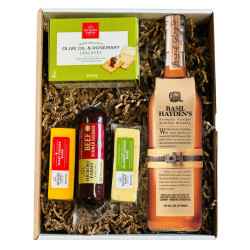
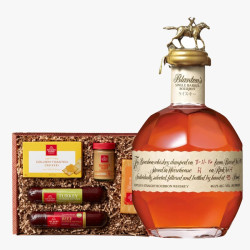



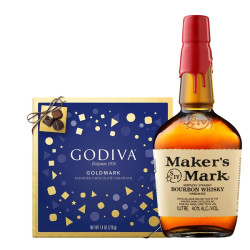













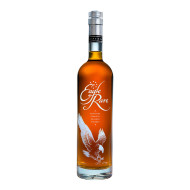
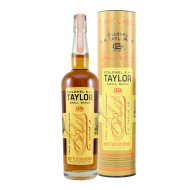
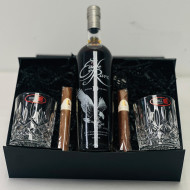
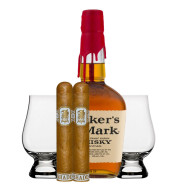
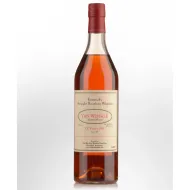


Leave a Comment